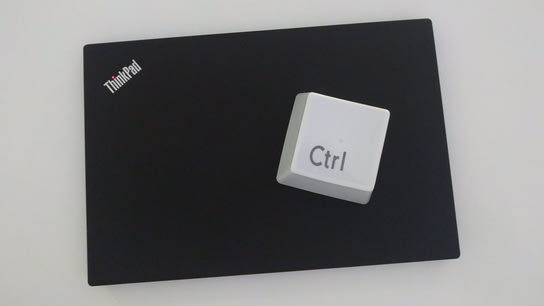I installed three Linux distributions — Fedora Linux 27, openSUSE Tumbleweed, and Ubuntu 17.10 — on the Lenovo ThinkPad Carbon X1 (5th gen.) and had a look at the out-of-the-box Linux hardware compatibility with these three distributions.
I tested three popular Linux distributions on the new fifth generation Lenovo ThinkPad Carbon X1. I’d to make a few preparations in Windows before I could even start the installation, but I won’t go into details about that here as I’ve already written more about this last month.
I was positively surprised with the three Linux distributions as almost everything worked out-of-the-box. Hardware compatibility used to vary quite a bit between different Linux distributions just a few years ago. These differences seem to be going away now that all distributions release up-to-date Kernels and userlands at least twice a year.
I downloaded all available software updates for each distribution after installing them. I didn’t configure or seek out any drivers or instructions other than the regular-use-configuration required to connect to networks and devices for testing.
Things that works out-of-the-box with no additional setup:
- Speakers, audio-jack, and built-in microphone.
- Bluetooth (tested with generic mouse, gamepad, and portable speakers)
- 4G connectivity (requires Micro-SIM card, EM7455 Qualcomm Snapdragon X7 LTE-A)
- WiFi (I saw same network speeds and reliability as Windows 10)
- The included proprietary-connector (‘Lenovo Native RJ45’) Ethernet adapter
- Graphics, display, and backlight control (Intel HD Graphics 620)
- Multimedia and function keys
- Thouchpad and trackpoint
- Micro-SD card reader
- GNOME running under X11 and Wayland
The Micro-SD card reader is located at the back of the machine inside the SIM-tray compartment. It’s an inconvenient location and requires that you tilt the screen down a bit to open the compartment. This isn’t the laptop to get if you intend to use the Micro-SD card reader a lot. If you only intend to use the Micro-SD card reader as a storage expansion slot or as a backup drive, then its sub-optimal location shouldn’t be a problem.
Things that didn’t work:
- GNOME apps can’t use the built-in Qualcomm GPS module for location (not recognized as a location source by GeoClue)
- Linux recognizes the finger print reader, but it can’t be used in GNOME.
In other words, you shouldn’t have any hardware compatibility problems for the common components of this laptop with the fifth generation Lenovo ThinkPad Carbon X1 in any recent and up-to-date Linux distributions.
Extra: USB Type-C power
The ThinkPad Carbon X1 charges through a standard USB-C connection with the included charger providing up to 65 watt. However, you can also slow-charge from a lower wattage USB-C source such as the charger for your smartphone or even a standard battery pack.
You can only get about 20 W from a Type-C charger meant for use with a mobile phone, so the battery is discharging faster than the power source can provide a charge. It can be slow-charging option in situations where you’ve forgotten the charger in a meeting room or don’t have access to another power source. Notably, this doesn’t work in Windows 10 as it doesn’t seem able to negotiate a charge from anything but the included charger. If you turn off the laptop, put it into hibernation (even Modern Standby, a.k.a. Fast Boot), or boot into Linux — you can charge from standard USB-C power source.
I also tested the output of the built-in USB Type-C ports using the Delock USB-C volt-/ammeter. The ports can provide up to 3 ampere at 5 volt (15 watt) for powering and charging your USB-C devices. This is just slightly less than you can expect from most USB-C chargers, which typically output 16–20 W.
Conclusions
I had a first generation ThinkPad Carbon X1 some , and it had problems with Wi-Fi disconnecting every few minutes, and the screen backlight wouldn’t turn on after resuming from hibernation.
I must admit that I was surprised that the 4G connectivity worked out-of-the-box without requiring hours to chase down drivers and troubleshooting. I fully expected that would be necessary, but it just worked right away.
Kudos to Lenovo for choosing components with open-source drivers available, and kudos to the Linux kernel for keeping up with the times and providing excellent support for new devices and components. The increased Linux support from component and device manufacturers means things now — even on new devices — just work.
I tested the Lenovo ThinkPad Carbon X1 model 20HR0022MX. I used the latest Kernel version for each distribution: 4.14 for Fedora Linux and openSUSE, and 4.13 for Ubuntu.
